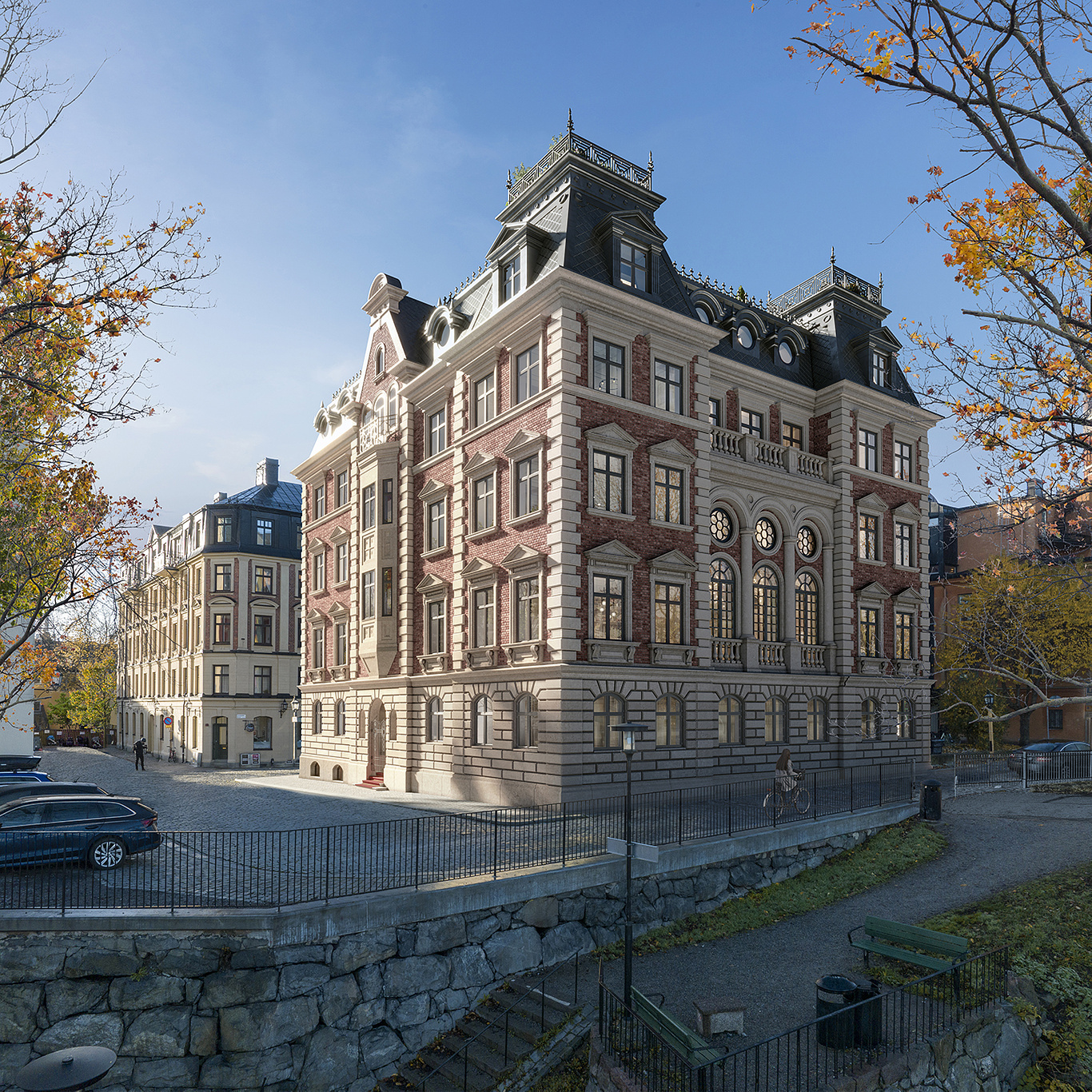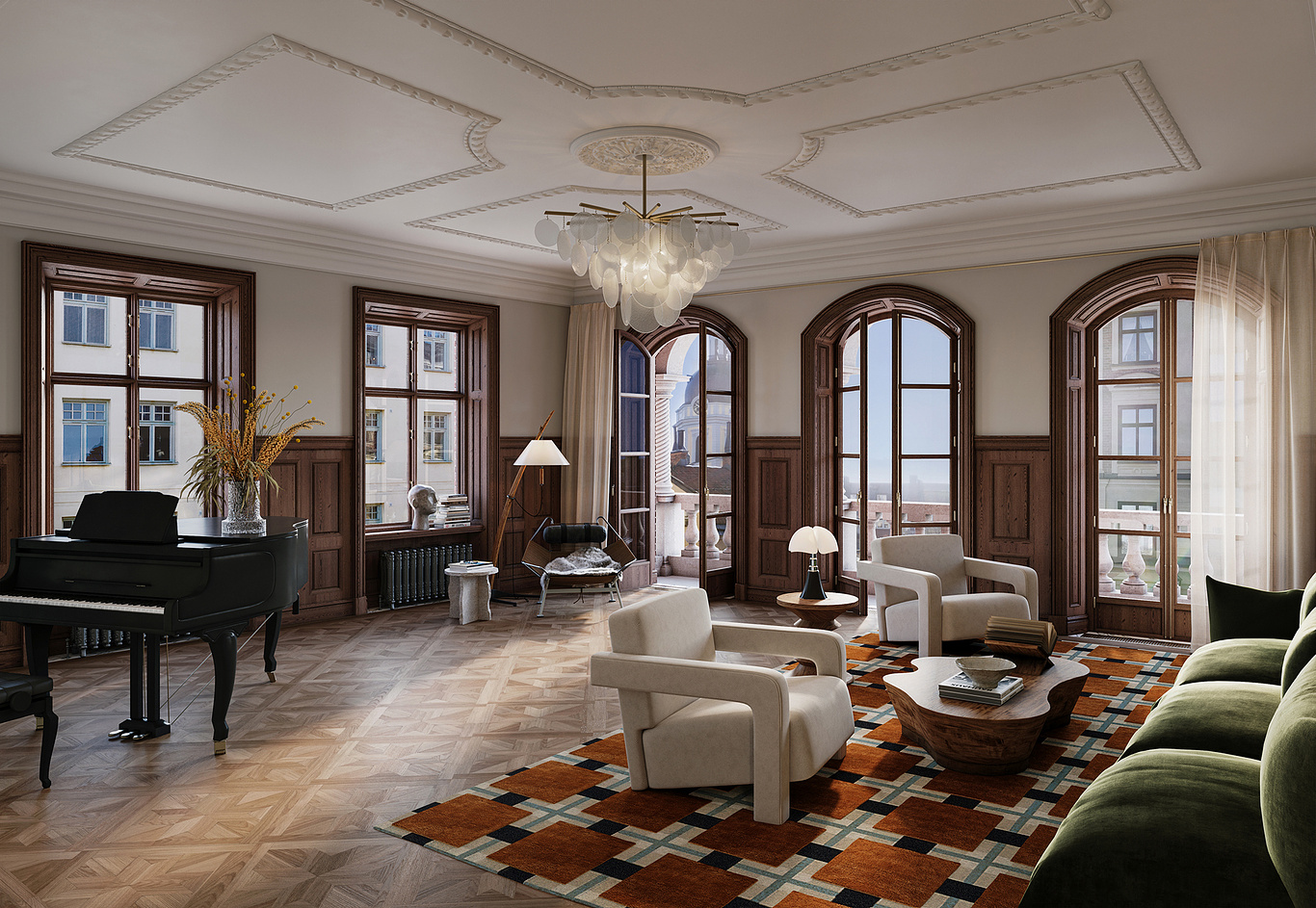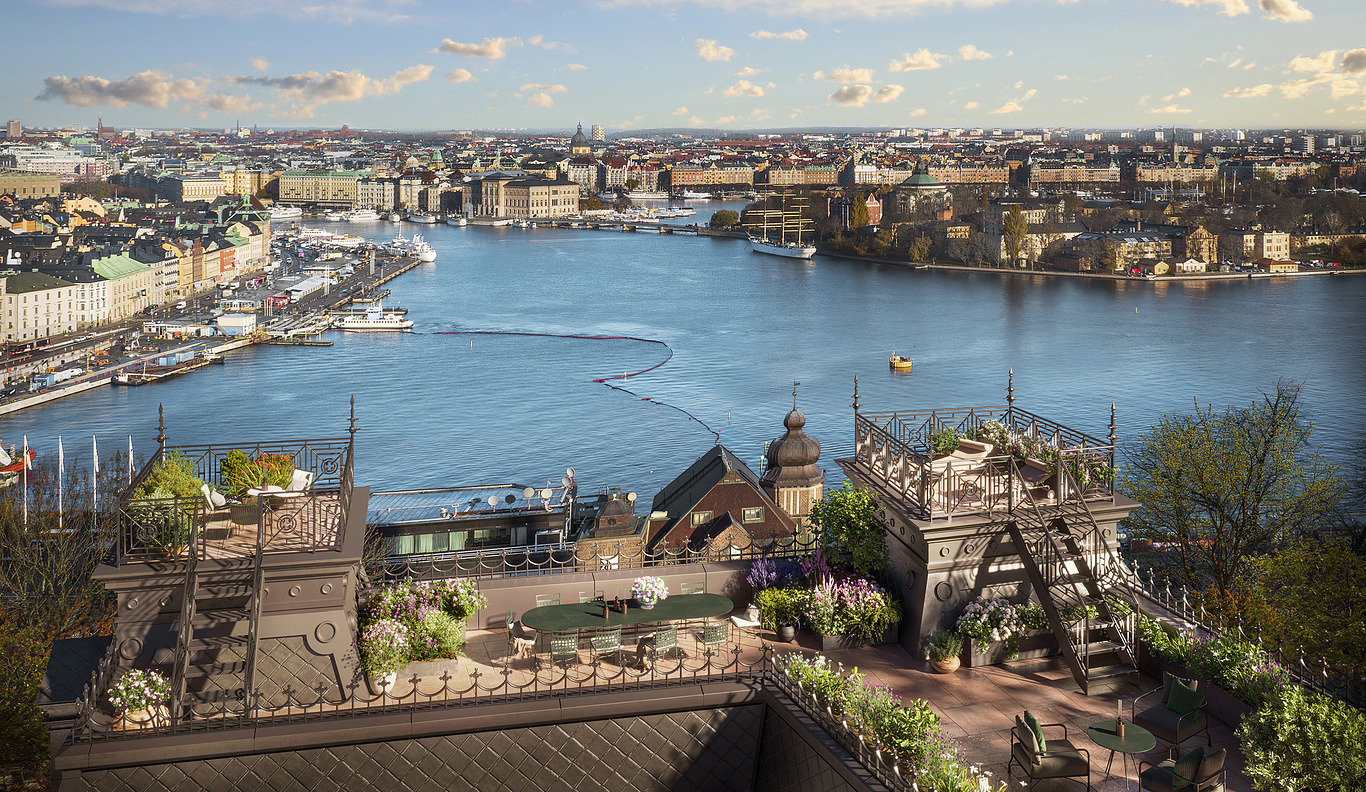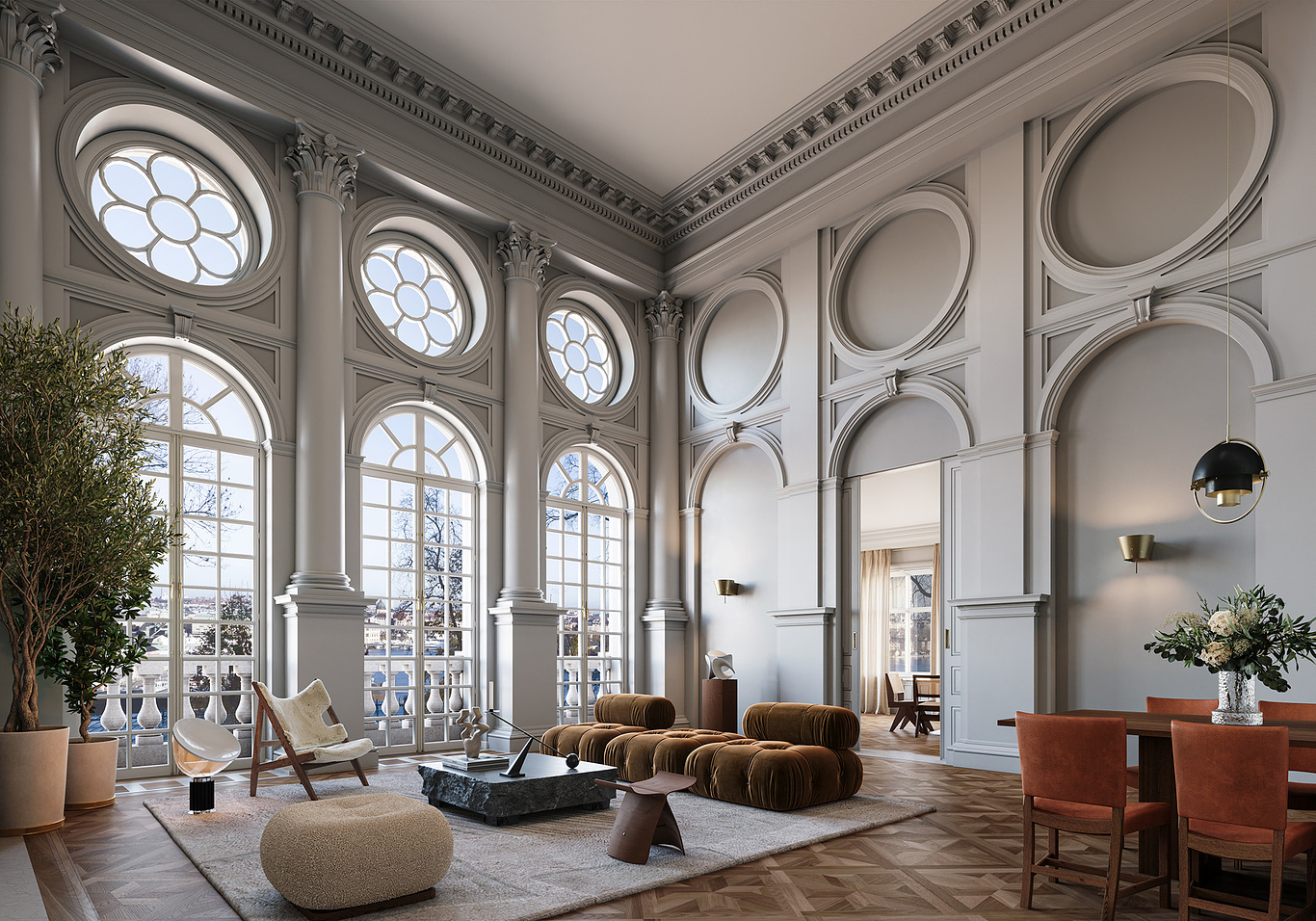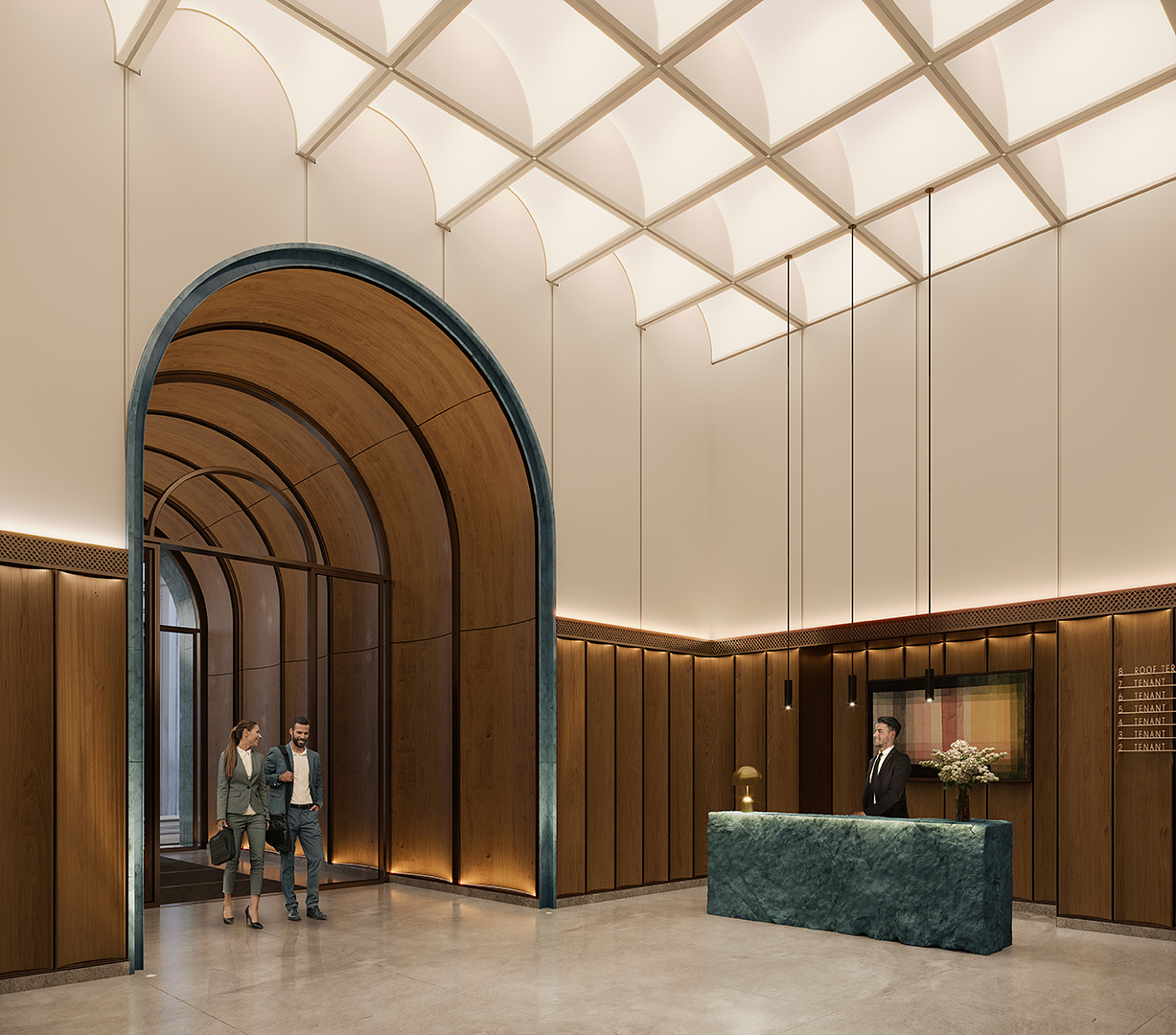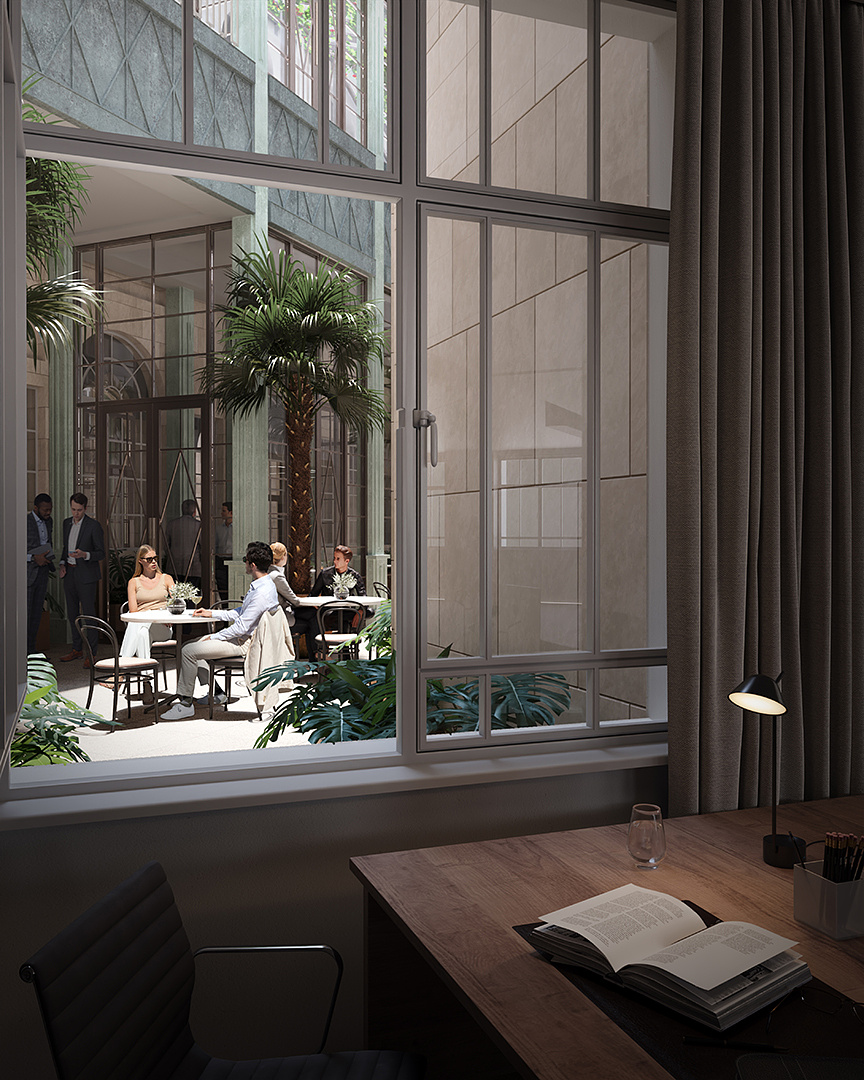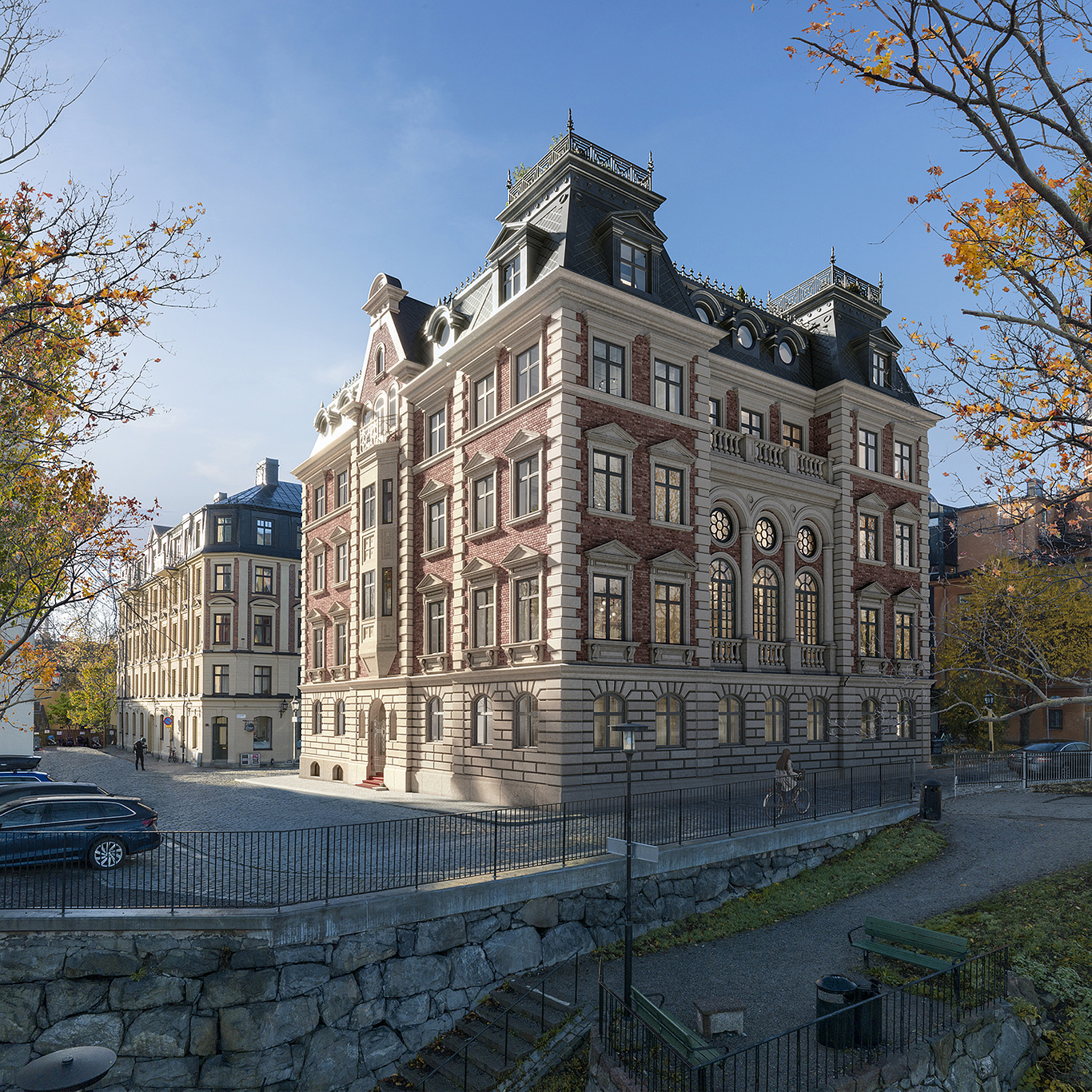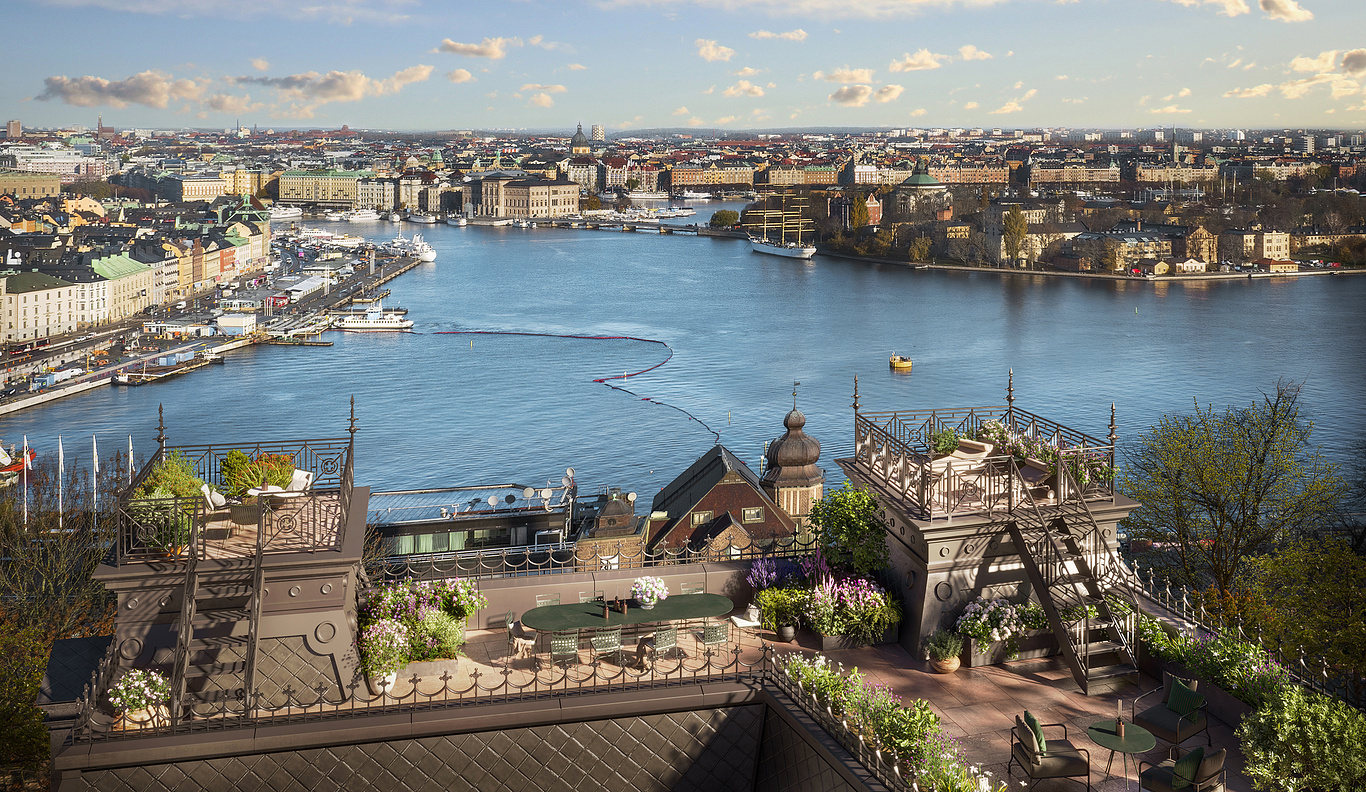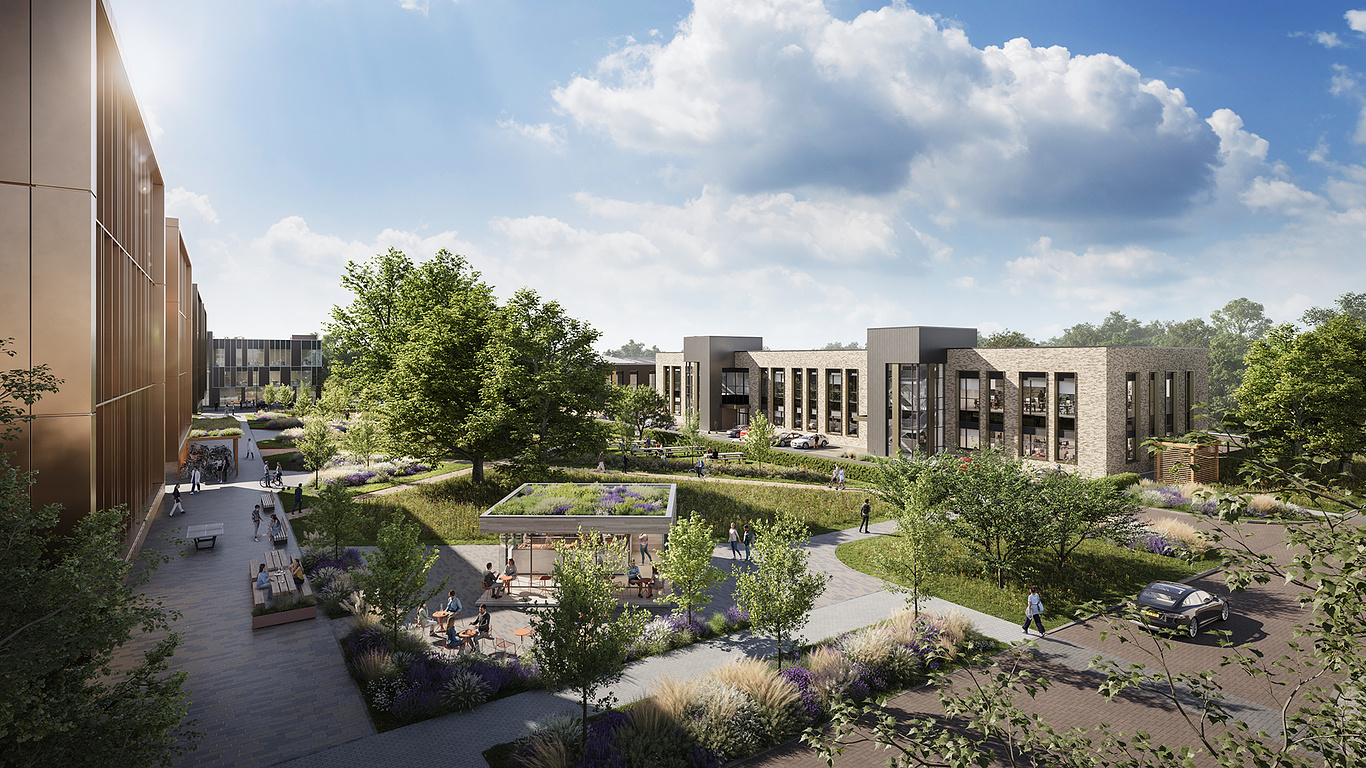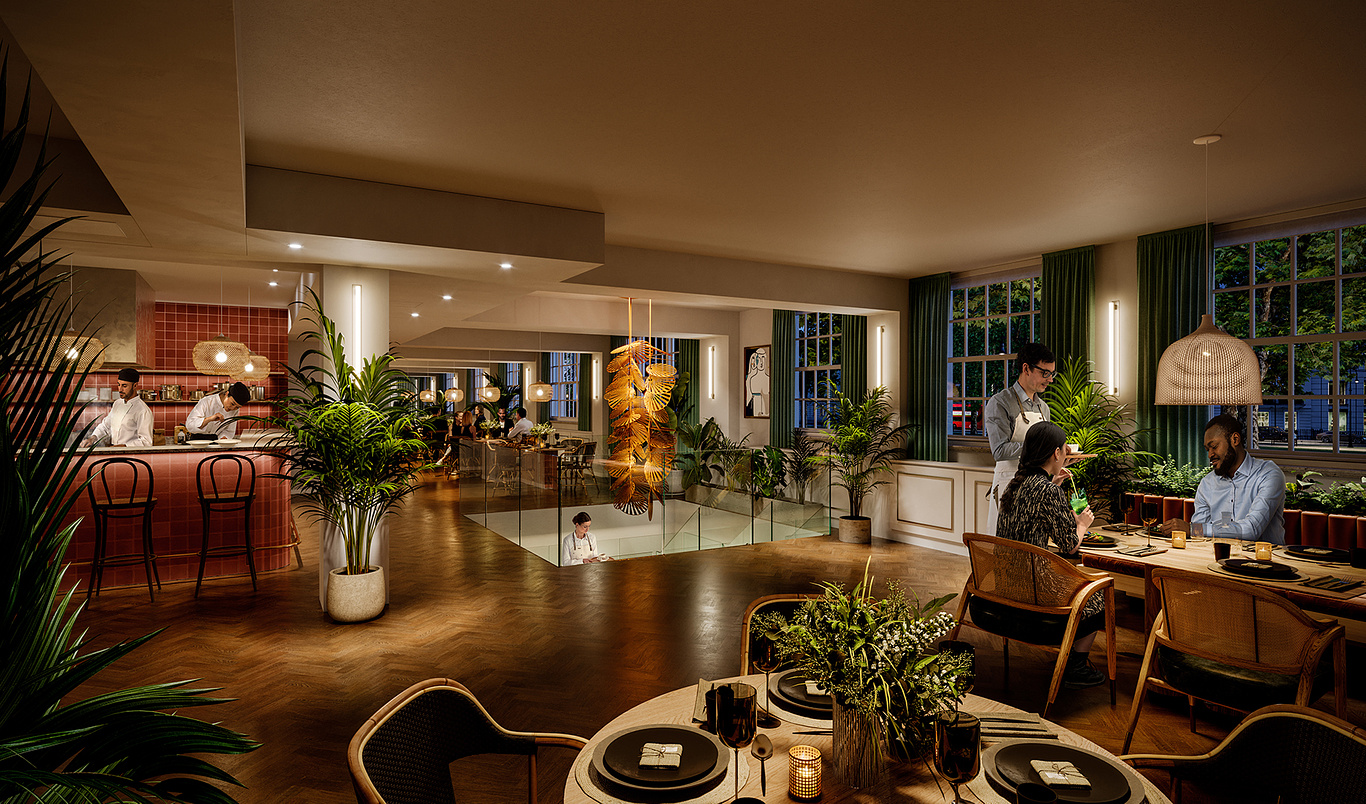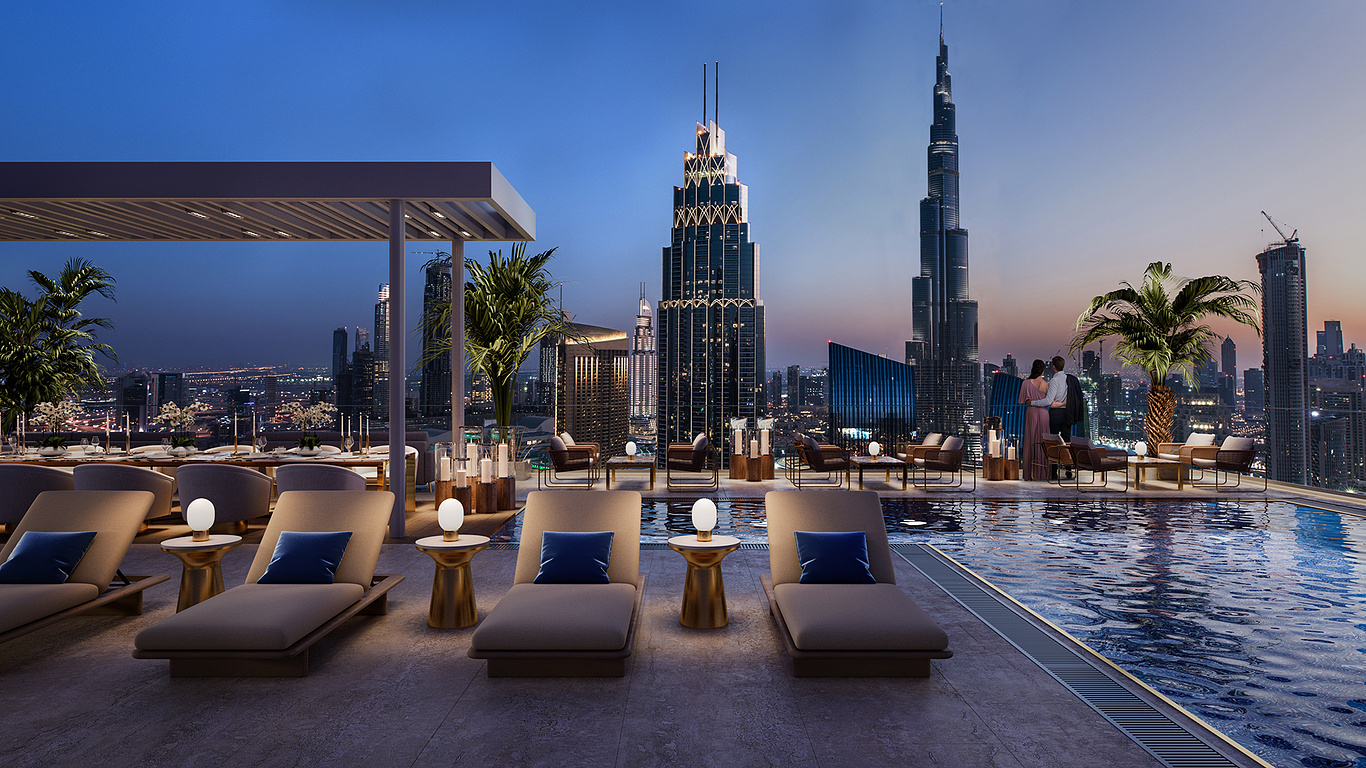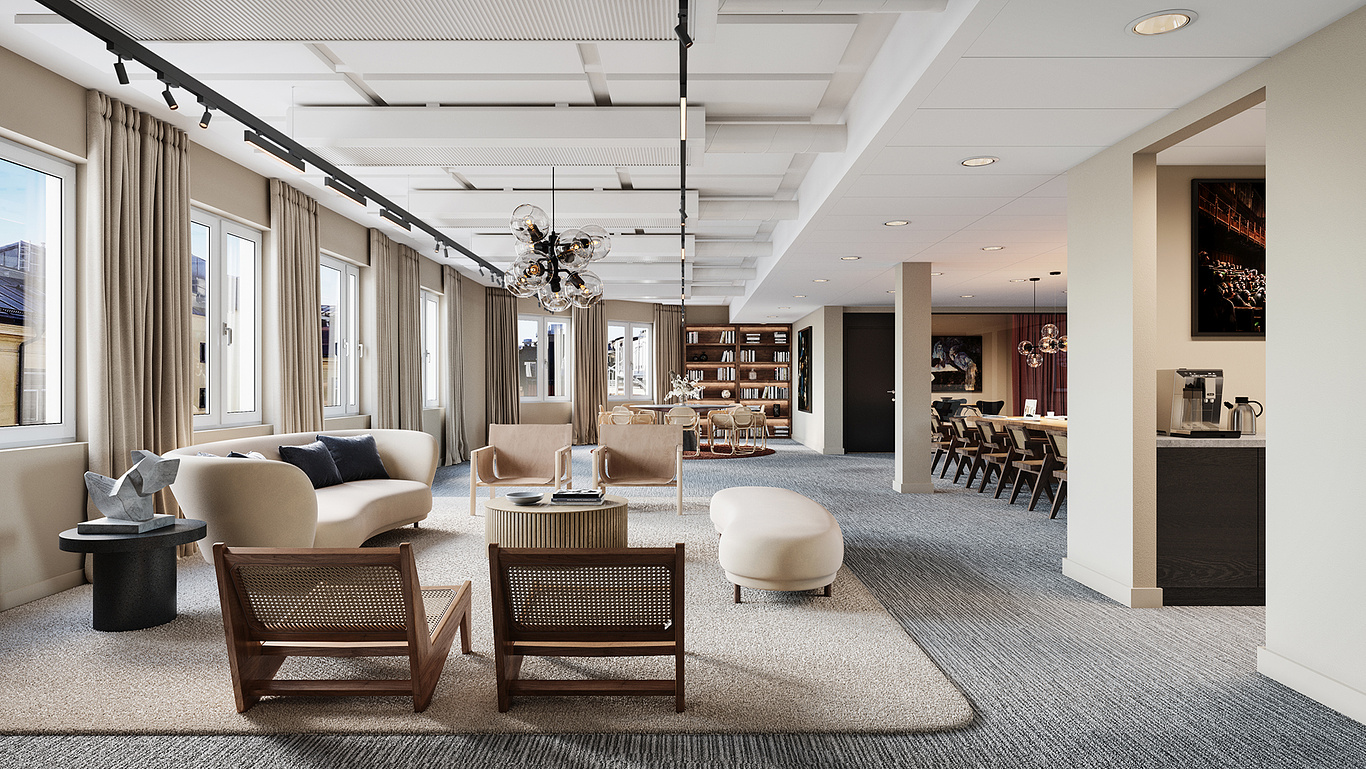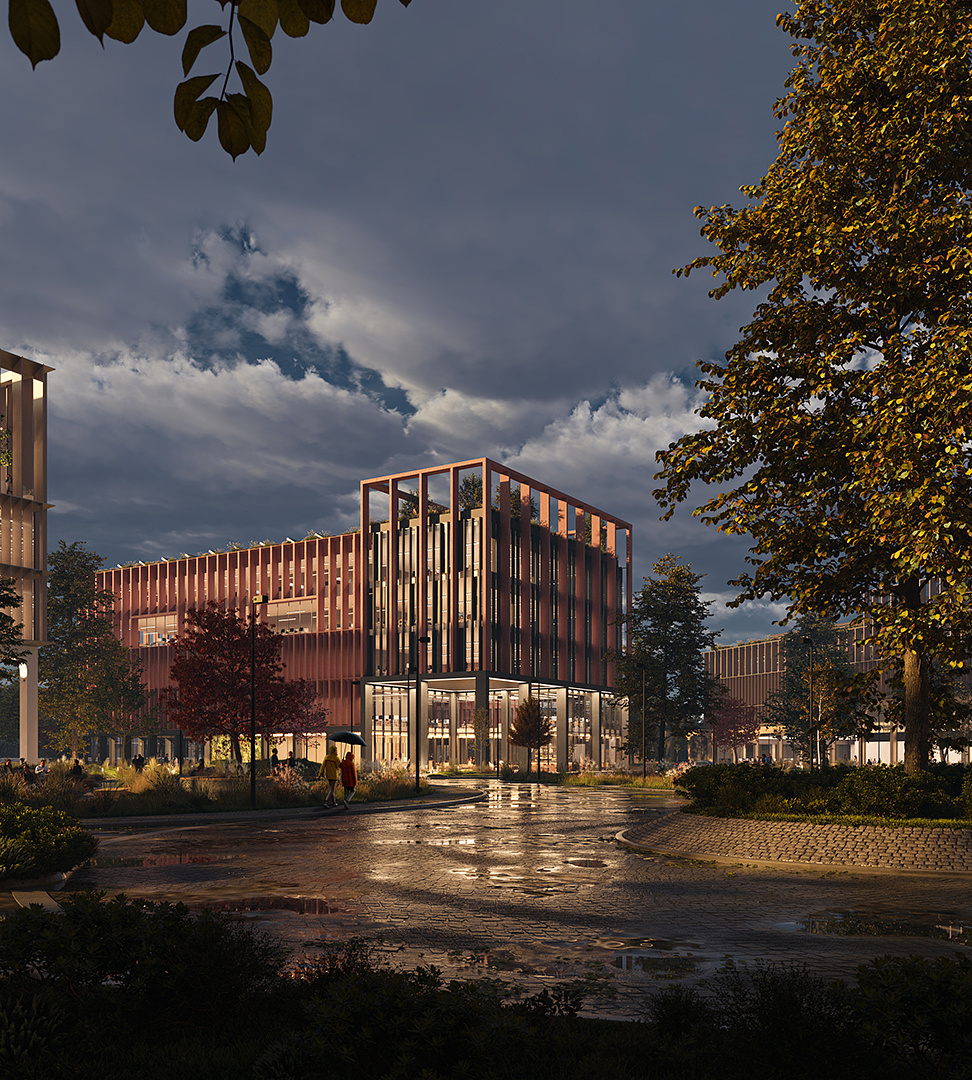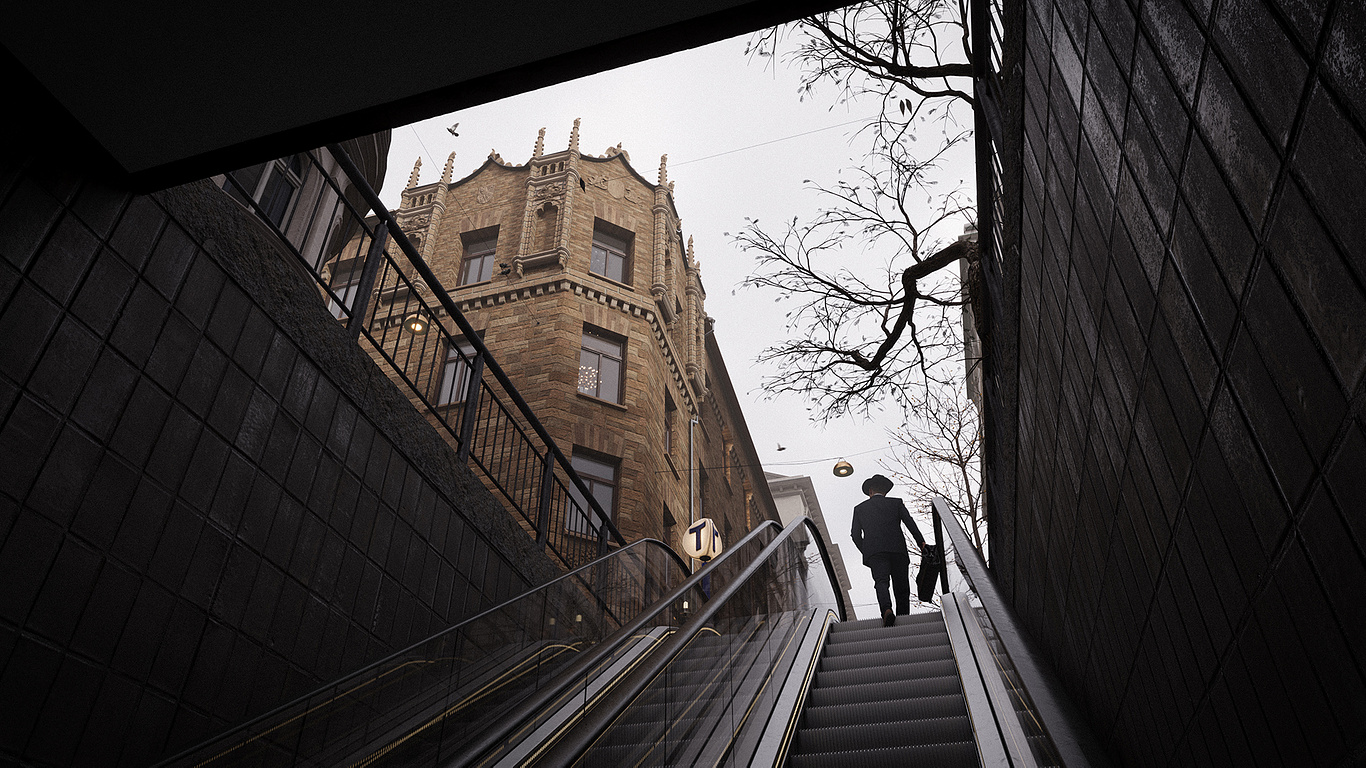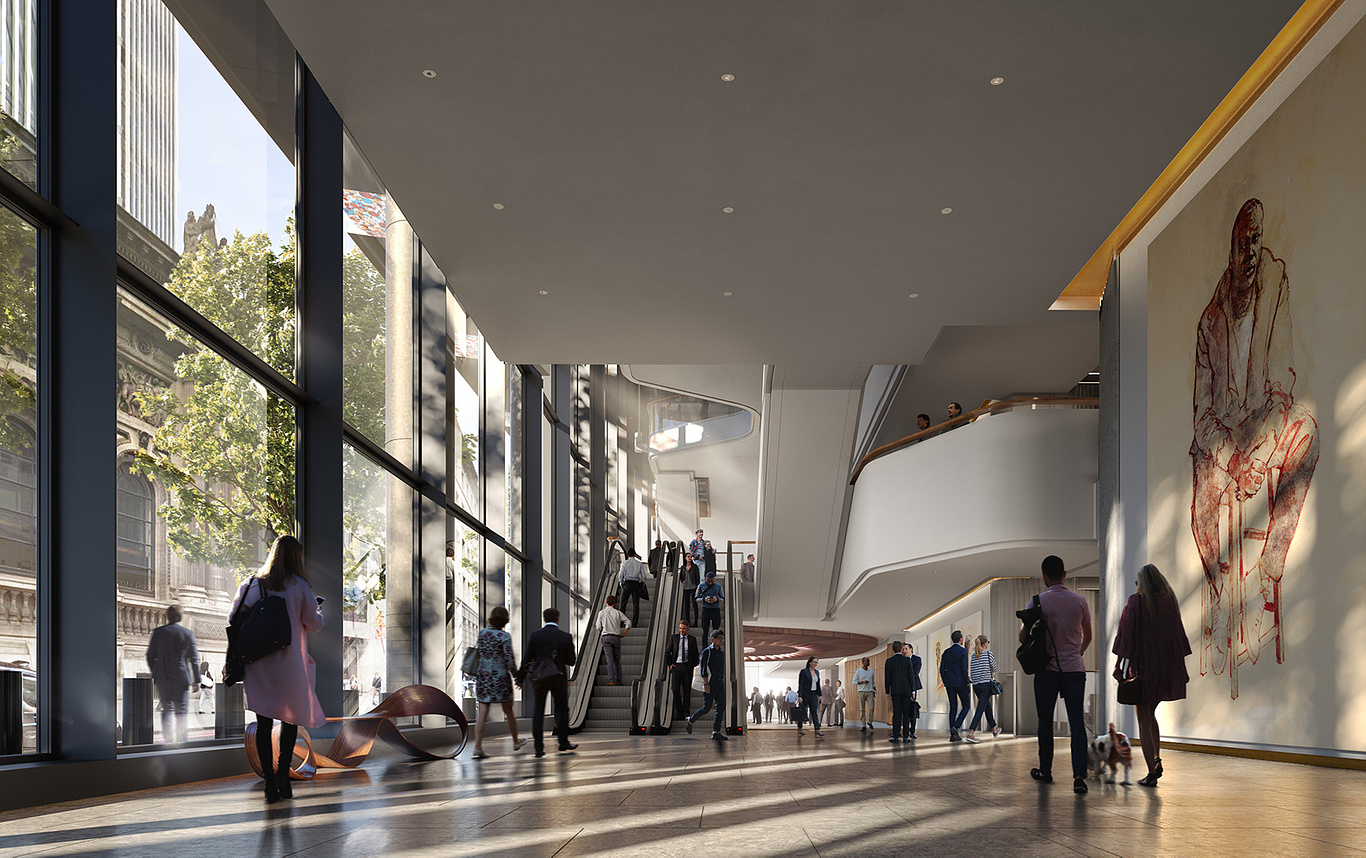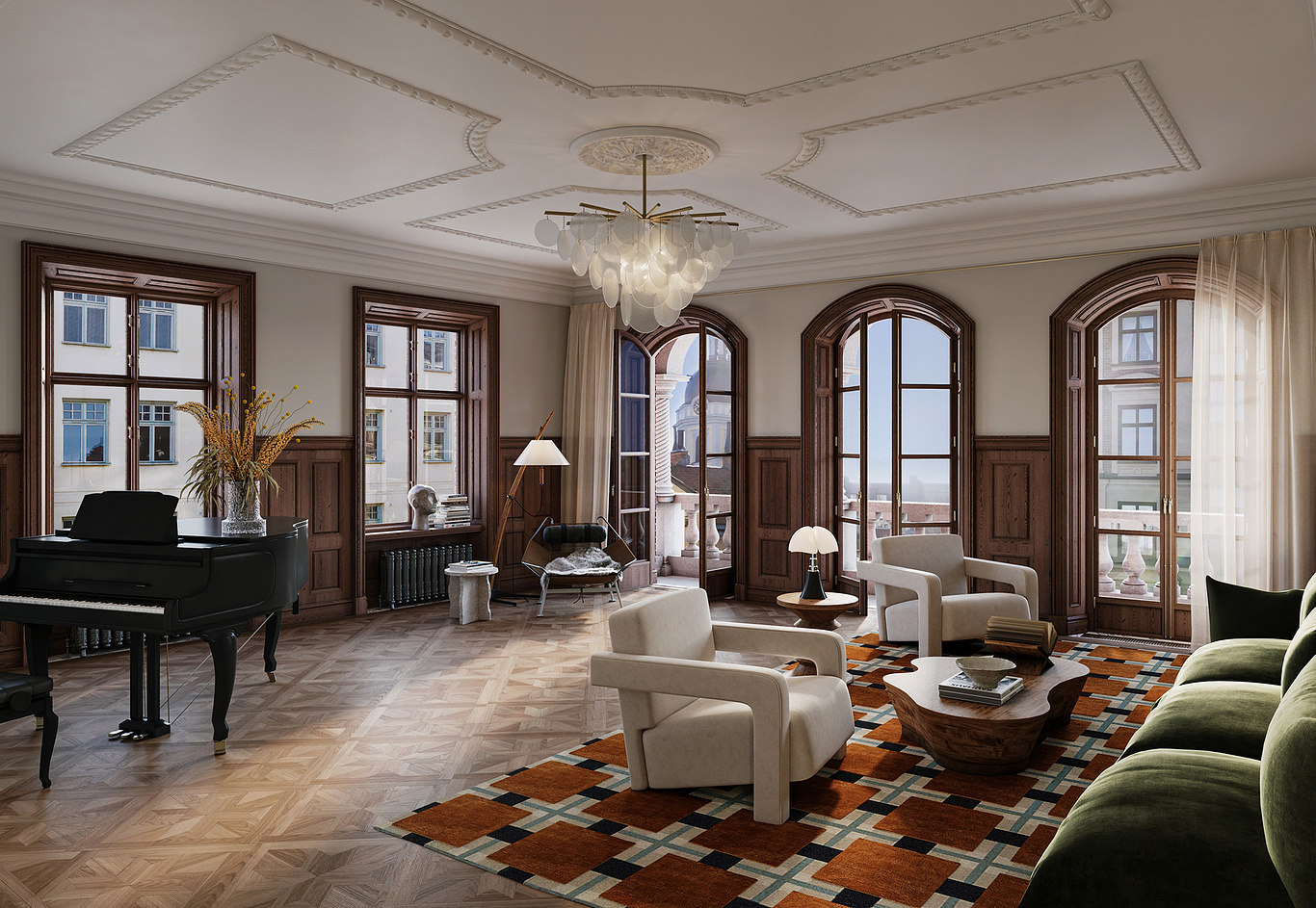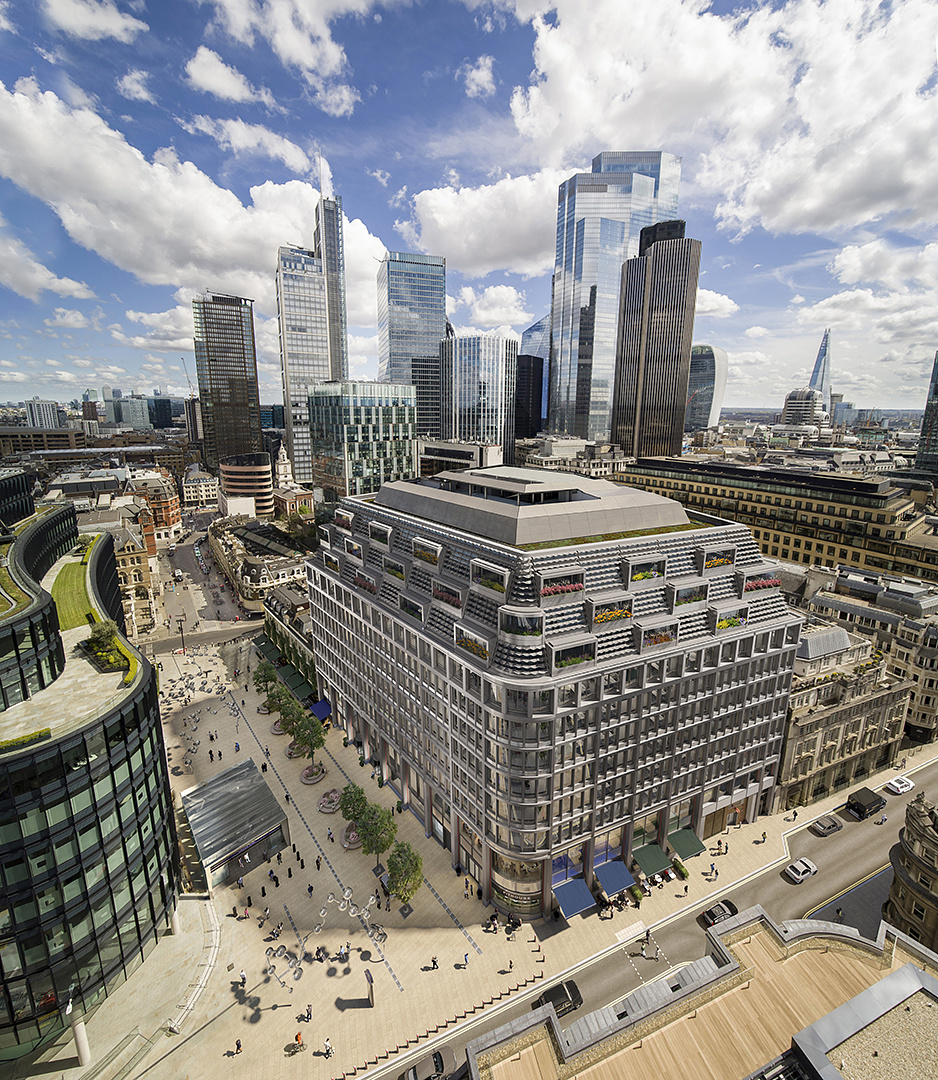
Interviews
Interview - Walk the Room
Welcome to our latest interview, where we have the pleasure of sitting down with the team at Walk the Room, a studio with operations in Stockholm, London and Prague, celebrated for its innovative approach to architectural visualization. In the business of architecture, where the visualization of ideas is as important as the ideas themselves, Walk the Room stands out for its ability to bring architectural concepts to life with clarity and creativity.
In this interview, we'll get an inside look at Walk the Room's journey in the architectural visualization industry. We'll discuss their creative processes, the challenges they face, and the techniques they use to produce visualizations that not only represent architectural designs but also evoke the essence of these spaces.
Join us as we chat with Walk the Room and discover how they skillfully combine artistry and technology to create compelling and realistic architectural visuals. It's a conversation that's sure to enlighten anyone interested in the intersection of architecture, design, and technology.
CGarchitect: What inspired the name "Walk the Room" for your studio?
Walk the Room: When we started the Company we offered a different type of solution; a web application that allowed our clients to design their own offices in 3D. Once the office was completed, you could take a tour and literally “walk the room”, hence the name.
CGa: How did the studio get its start, and what was the vision behind its inception?
WtR: The initial idea was to improve the communication between a developer and a potential tenant. Working with CGIs wasn’t necessarily our goal, but it turned out to be one of the most effective ways to show the potential of a building, bridging the gap between the developer and the tenant. Although we are big fans of artistry, the founding partners of WtR come from a business background. Our goal has always been to build a sustainable business that positively affects the real estate industry and creates a thriving climate for our colleagues. This approach has allowed us to hire some of the best people in the industry, allowing them to do what they do best without us meddling in the creative process.
CGa: What do you believe sets your studio apart from other CG studios in the industry?
WtR: Our primary audience is commercial real estate developers and all interested parties in the marketing and leasing process. Working with this type of client, we put as much focus on the client journey, being a service-minded and consultative partner to our clients as we do the artistic quality. We believe this is one of our success factors, allowing us to work with giants in the industry, such as Hines, The Prime Group, The Durst Organization, Skanska, Fabege, Stanhope, Panattoni and many more.
CGa: Can you share some insights into your creative process when starting a new project?
WtR: It can vary from project to project, but it tends to be a very organic and collaborative process, heavily reliant on the client brief and reference imagery. After some trial and error, we found that at WtR, the best way to go about the creative process is to work with references and to give artists ownership and creative freedom in their output. Maintaining constant communication and discussing ideas and directions in mood and storytelling is also key to our creative process. This usually entails the best results and is the most gratifying for the creative team. At WtR, we like to have regular themed workshops and masterclasses to keep our creativity constantly flowing, after all, making the day-to-day tasks formulaic is never something a creativity-driven company should do.
CGa: How do you handle feedback and revisions from clients? Do you have a specific process in place?
WtR: Handling feedback and revisions in a timely and effective manner is crucial for us to ensure meeting project deadlines and keep our team frustration-free.
In keeping with our service-minded approach, this is not just a process for us; it's a personalized service tailored to meet each client's unique needs. We leverage review platforms to streamline our feedback process to gather our client’s insights. However, depending on the project's nature and the collaborating team's size, we provide customized tools to facilitate feedback.
This is particularly important when working with diverse teams comprising architects, real estate agents, creative agencies, etc. In large-scale projects, it is a priority to aid in the process of helping all the different parties involved, each with their unique vision, reach a solution everyone is happy with. We go the extra mile to adapt our processes to suit the specific dynamics of each team, ensuring a smooth review process that truly captures the vision of everyone involved.
Recognising the challenges of maintaining clarity in mid-stages, we might take a consultative approach and use our expertise to complement client feedback when beneficial. Clients trust and welcome our support, fostering a collaborative relationship.
Walk the Room: When we started the Company we offered a different type of solution; a web application that allowed our clients to design their own offices in 3D. Once the office was completed, you could take a tour and literally “walk the room”, hence the name.
CGa: How did the studio get its start, and what was the vision behind its inception?
WtR: The initial idea was to improve the communication between a developer and a potential tenant. Working with CGIs wasn’t necessarily our goal, but it turned out to be one of the most effective ways to show the potential of a building, bridging the gap between the developer and the tenant. Although we are big fans of artistry, the founding partners of WtR come from a business background. Our goal has always been to build a sustainable business that positively affects the real estate industry and creates a thriving climate for our colleagues. This approach has allowed us to hire some of the best people in the industry, allowing them to do what they do best without us meddling in the creative process.
CGa: What do you believe sets your studio apart from other CG studios in the industry?
WtR: Our primary audience is commercial real estate developers and all interested parties in the marketing and leasing process. Working with this type of client, we put as much focus on the client journey, being a service-minded and consultative partner to our clients as we do the artistic quality. We believe this is one of our success factors, allowing us to work with giants in the industry, such as Hines, The Prime Group, The Durst Organization, Skanska, Fabege, Stanhope, Panattoni and many more.
CGa: Can you share some insights into your creative process when starting a new project?
WtR: It can vary from project to project, but it tends to be a very organic and collaborative process, heavily reliant on the client brief and reference imagery. After some trial and error, we found that at WtR, the best way to go about the creative process is to work with references and to give artists ownership and creative freedom in their output. Maintaining constant communication and discussing ideas and directions in mood and storytelling is also key to our creative process. This usually entails the best results and is the most gratifying for the creative team. At WtR, we like to have regular themed workshops and masterclasses to keep our creativity constantly flowing, after all, making the day-to-day tasks formulaic is never something a creativity-driven company should do.
CGa: How do you handle feedback and revisions from clients? Do you have a specific process in place?
WtR: Handling feedback and revisions in a timely and effective manner is crucial for us to ensure meeting project deadlines and keep our team frustration-free.
In keeping with our service-minded approach, this is not just a process for us; it's a personalized service tailored to meet each client's unique needs. We leverage review platforms to streamline our feedback process to gather our client’s insights. However, depending on the project's nature and the collaborating team's size, we provide customized tools to facilitate feedback.
This is particularly important when working with diverse teams comprising architects, real estate agents, creative agencies, etc. In large-scale projects, it is a priority to aid in the process of helping all the different parties involved, each with their unique vision, reach a solution everyone is happy with. We go the extra mile to adapt our processes to suit the specific dynamics of each team, ensuring a smooth review process that truly captures the vision of everyone involved.
Recognising the challenges of maintaining clarity in mid-stages, we might take a consultative approach and use our expertise to complement client feedback when beneficial. Clients trust and welcome our support, fostering a collaborative relationship.
CGa: What challenges do you often face in the CG industry, and how does your studio overcome them?
WtR: As a service-minded company, one of the biggest challenges we face daily is translating our client's vision into visually pleasing output. Often when we discuss efficiency versus quality in projects and we choose just to follow clients' comments blindly, we have to remind ourselves and the clients sometimes, too, that we're being hired first and foremost for our talent and expertise, not only to say yes to all requests. Clients can be fickle at times and have very strong ideas, which we try our best to advise on while keeping in mind that those ideas, which aren't always cohesive, need to be turned into something that meets the client’s (and their various internal departments) brief and expectations but also our quality standard, all of that in a timely manner, which often does not go hand in hand. Finding this balance and prioritizing between meeting deadlines, pleasing clients, making something that we're proud to showcase as our company's work and turning a profit from the whole process is a daily battle.
CGa: Can you discuss a particularly challenging project your studio worked on and you’re most proud of? How did you tackle it?
WtR: For Sandow Lakes Ranch, the largest scale project we have ever tackled, we produced 12 CGIs and a stunning animation, spanning an incredible 350 000 000 square feet / 32 516 065m², showcasing how an entirely new city, designed to host 50 000 jobs, could be designed and developed in the future. As the whole development is still in the early conceptual stages, we received very little information on the design itself, and our team had a lot of freedom, using their technical and creative skills to the max. The team of artists worked based on references provided by the architect, which we used to flesh out the design in more detail. They all worked autonomously on developing the interiors, buildings, or masterplan designs within their views. As the team working on this project was quite big, it required a lot of communication, sharing of massive files, and ensuring all views were updated in line with every other artist’s views. For the 2 minutes long animation, we probably pushed 3D studio max to its limits. This is a great example of where the team at WtR worked autonomously and tapped into the great wealth of creativity and design. As a result, we built a vision from scratch and sold an aspiring place through storytelling and convincing design!
We have a project called “the City Palace” on the other side of the size spectrum. This was kind of an unusual project for us and an unusual project for the city of Stockholm as well. Two teams of architects were appointed to each create a competitive proposal of an 1100 sqm villa located at one of Söders hills, with an amazing view of Saltsjön, the sea that enters Stockholm from the east. The building will consist of 5 liveable floors, including a garage with a car elevator, a basement floor with a wine cellar and cinema, plus two floors with roof terraces, a spa and a gym. We teamed up with architecture firms Tradition and MOD arkitekter. To bring their architectural design to life, we brought in our design specialists, art director, and a team of artists who collaborated closely with the architects, finding a style and unique furniture pieces, as well as the best angles and light settings that would enhance the beauty of the architecture and building itself. The jury is still out on this, and we are very excited to see which team of architects will win the 1st prize in this competition!
CGa: How do you ensure that your team stays updated with the latest techniques and technologies in the CG world?
WtR: There is no specific method to this madness of keeping up with the latest innovations but thankfully, our team of artists is always posting articles on new software/plug-ins/ techniques and their personal developments with those. Generally, we take a very democratic approach to this, where if it generates enough buzz within the team, we try to do some further research to see how we could implement the new subject into our workflow, or if it’s not something we see enough relevancy to invest in but it’s still cool, we might make it a theme or an element of a workshop where the artists can at least give it a try.
CGa: Collaboration is key in creative projects. How do you foster teamwork and ensure smooth communication within the studio?
WtR: At the core of our studio's success is a commitment to fostering collaboration and teamwork. We've cultivated a culture where everyone, irrespective of their department, knows and can work closely with each other. We can actively see team members in their respective roles contributing passionately to the success of our projects. Additionally, regular team-building activities strengthen our interpersonal connections, ensuring that everyone knows each other on a personal level.
Our studio setup is unique in that there is a limited number of people in the office and a majority working remotely, therefore, effective communication is paramount. We've established clear communication channels to bridge the physical gap, and our main focus is to make our processes as transparent and consistent as possible. We recognise that each project has its unique dynamics, so we don't take a one-size-fits-all approach. Instead, we adapt our processes to the specific needs of each project. This flexibility includes setting up additional structures and communication layers when necessary, ensuring that we have the right frameworks in place for success.
At a team level, recognising and respecting each person's preferred communication style is also key, the way we adapt to each other ensures smooth collaboration across the team. And, of course, regular sharing of work-in-progress is a standard practice, keeping everyone informed and engaged in the project's development at all times. Whether through regular updates or spontaneous check-ins, we prioritize open and constant communication. This enhances our teamwork and contributes to a shared sense of purpose and achievement within the studio.
Our studio setup is unique in that there is a limited number of people in the office and a majority working remotely, therefore, effective communication is paramount. We've established clear communication channels to bridge the physical gap, and our main focus is to make our processes as transparent and consistent as possible. We recognise that each project has its unique dynamics, so we don't take a one-size-fits-all approach. Instead, we adapt our processes to the specific needs of each project. This flexibility includes setting up additional structures and communication layers when necessary, ensuring that we have the right frameworks in place for success.
At a team level, recognising and respecting each person's preferred communication style is also key, the way we adapt to each other ensures smooth collaboration across the team. And, of course, regular sharing of work-in-progress is a standard practice, keeping everyone informed and engaged in the project's development at all times. Whether through regular updates or spontaneous check-ins, we prioritize open and constant communication. This enhances our teamwork and contributes to a shared sense of purpose and achievement within the studio.
CGa: How do you see the role of A.I. in the future of creating architectural images? Has "Walk the Room" started integrating any AI-powered tools or techniques into your workflow?
WtR: Yes, we have a lot of interest and curiosity within the team, so this has been a recurring topic in WtR for some time, we’re slowly incorporating A.I. in our workflow to make it more efficient in a few aspects, far from a full take over still, mostly for early approval stages and also for later stages in post and the usual asset implementation.
A.I. has been evolving at an incredibly fast pace, and there is no avoiding it, especially not in a tech-driven industry like ours, we all have to be smart and learn how to use it in our favor sooner rather than later.
CGa: Are there any exciting upcoming projects or collaborations that you can share with us?
WtR: Since Walk the Room started in 2010, the Scandi and London markets have been our strongholds, but about two years back, we started targeting the US market as a potential new growth area for us as a company, and this year, we have seen all of our efforts come into fruition! We are currently working in the early stages of our biggest US project. The Monroe Residences & Hotel, located in downtown Chicago and partially designed by the renowned architecture firm Skidmore, Owings & Merrill, is undergoing major renovations and will be transformed into a mixed-use building complex including a hotel, residential, beautiful high-ceiling atriums and courtyards, roof terraces with swimming pools along with amazing views, among many other things. We are currently working on marketing collaterals, including a pack of 20+ CGIs and an animation, and our team is working hard in developing the spaces alongside our client, testing out different solutions, at times with the help of AI. The building boasts beautiful architecture from the 1910s and 1950s, which we draw inspiration from and strive to enhance with our additions.
As a business, we operate in an ever-changing landscape with opportunities and challenges. We are always looking to expand our horizons, test new things, and develop ourselves. To stay on top and become one of the absolute frontrunners in our industry, we are continuously questioning how we can be better and stronger together. During the last 1-2 years, we have started developing new solutions closely connected to our core business, exploring digital twins, new leasing tools, and ways for not only us but for our clients to streamline processes and enhance collaborativeness. We are beyond excited about this, and at the beginning of the next year, we will hopefully see this development transform into successful collaborations and projects!
CGa: How do you choose which projects to take on? Is there a specific criteria or selection process?
WtR: At Walk the Room we want to stay as versatile as possible. We know what our “bread and butter” is. Still, we cater to various industries, so we expand our portfolio and maintain our relevancy as a company among our competitors. This is not to say that we take anything in, projects with a larger scope always attract us, but we don’t shy away from a smaller project, especially if it comes from our recurrent clients, keeping good relationships with these clients is a vital aspect in WtR, and if a small project comes from a new client with potential for a great story to be told with, you never know, it might open other doors in the near future.
CGa: What advice would you give to someone aspiring to enter the CG industry or start their own studio?
WtR: Maybe two would be better: The first is to stay curious, the CG business is ever-growing and ever-changing, and technology is more readily available, so competition is always knocking on your door, the more comfortable you get, the easier it’ll be to be left behind. The second piece of advice is to be patient and resilient, even though it’s a lot of fun, it is not an easy business to pursue in many ways, client relations can be frustrating at times, and staying creative daily is not an easy task either.
For both cases, refresh yourself and your abilities now and then, stay interested and on your toes, and you’ll be ok.
For both cases, refresh yourself and your abilities now and then, stay interested and on your toes, and you’ll be ok.
CGa: Lastly, where do you see "Walk the Room" in the next 5 years, and what are your goals for the studio's future?
WtR: We want to become an even more integral part of the leasing process, offering new and exciting solutions to our clients that help them dispose of their projects. To do so, we are now developing a new suite of products and solutions fueled by the creative output we produce today. We want to transition the Company from a “3D studio powered by technology” to a “Prop-tech Company powered by creativity”. 3D will always be close to our hearts and an integral part of our business, but it will not be the only solution we offer to our clients next year, let alone five years in the future.
You can see more of Walk the Room's amazing work on their website.
You can see more of Walk the Room's amazing work on their website.
You must be logged in to post a comment. Login here.
About this article
In our latest interview, where we have the pleasure of sitting down with the team at "Walk the Room," a studio celebrated for its innovative approach to architectural visualization.
visibility454
favorite_border1
mode_comment0


